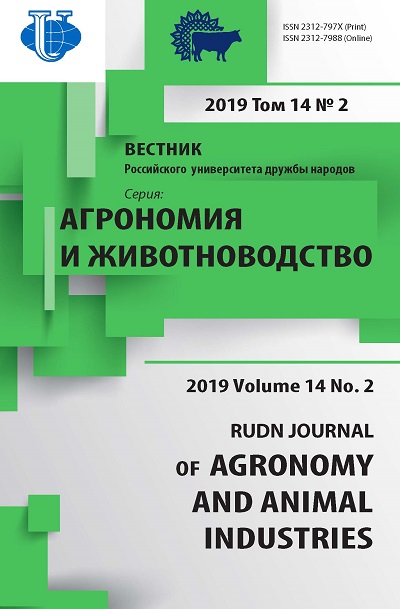Improving laboratory control of butter
- Authors: Seregin I.G.1, Nikitchenko D.V.2, Leontiev L.B.1, Akulich O.A.1
-
Affiliations:
- Russian State Agrarian University - Moscow Timiryazev Agricultural Academy
- Ostankino Meat Processing Plant
- Issue: Vol 14, No 2 (2019)
- Pages: 170-178
- Section: Veterinary sanitary inspection
- URL: https://agrojournal.rudn.ru/agronomy/article/view/19495
- DOI: https://doi.org/10.22363/2312-797X-2019-14-2-170-178
- ID: 19495
Cite item
Full Text
Abstract
The work is devoted to the improvement of laboratory control of cow butter, which is sold in the chain stores and markets. The social relation of buyers to butter, its range in various retailers are studied, and samples of the butter, acquired in chain stores and markets of Moscow and Vladimir, are investigated. During microbiological studies, the presence of E. coli in the butter “Krestianskoe” was established, which does not meet the safety requirements of this product. In addition, in this butter was revealed a reduced content of milk fat 71.5% instead of 72.5%. Butter “Shokoladnoe” of the “Krestianskoe” trademark had only 60% of fat content, instead of the declared 62%. The packaging of this oil is marked with a distorted label according to the shelf life and storage conditions, which indicates information falsification. There is a mismatch in selected samples with the requirements of GOST and the stated indicators, which indicates the need to develop additional methods for identifying various fakes in butter. It was determined that by melting butter in hot water, by microscopying a product using a compressor or by irradiating the surface of butter with UV rays, it is possible to quickly and reliably identify some of its falsifications.
About the authors
Ivan Georgievich Seregin
Russian State Agrarian University - Moscow Timiryazev Agricultural Academy
Author for correspondence.
Email: iseregin@rgau-msha.ru
Candidate of Sciences in Veterinary, Professor of the Department of Morphology and Veterinary
Moscow, Russian FederationDmitry Vladimirovich Nikitchenko
Ostankino Meat Processing Plant
Email: v.e.nikitchenko@mail.ru
Doctor of Sciences in Biology, Chief Veterinarian
Moscow, Russian FederationLeonid Borisovich Leontiev
Russian State Agrarian University - Moscow Timiryazev Agricultural Academy
Email: Leontjev_Lenya@mail.ru
Doctor of Sciences in Biology, Professor of the Department of Morphology and Veterinary Medicine
Moscow, Russian FederationOlga Andreevna Akulich
Russian State Agrarian University - Moscow Timiryazev Agricultural Academy
Email: iseregin@rgau-msha.ru
Master of the Department of Morphology and Veterinary
Moscow, Russian FederationReferences
- Zhidkov VE, Chimonina IV, Davidenko NI. The effect of butter and margarine products on human health: the physiological aspect. Symbol of science. 2016; 12(2):14—17. (In Russ).
- GOST 31449-2013. Raw cow milk. Technical conditions dated June 7, 2013. (In Russ).
- Seregin IG, Dunchenko NI, Mikhaleva LP. Production veterinary and sanitary control of milk and dairy products. Moscow: DeLi print Publ.; 2009. (In Russ).
- Rules of veterinary and sanitary examination of milk and dairy products in the markets of July 1, 1976. (In Russ).
- Technical regulations of the Customs Union. Safety of milk and dairy products. (TR CU 033/2013) October 9, 2013. (In Russ).
- GOST 32261—2013. Butter. Technical conditions of November 14, 2013. (In Russ).
- Mishchenko AA, Kryuchkova VV. Analysis of the results of quality control of butter sold in the retail network of Russian regions. Young Scientist. 2016;18-1(122): 5—9. (In Russ).
- GOST R 55361—2012. Milk fat, butter and butter paste from cow's milk. Acceptance rules, sampling and control methods of November 29, 2012. (In Russ).
- GOST 32899—2014. Butter with flavoring components. Technical conditions dated December 5, 2014. (In Russ).
- GOST R 52253—2004. Butter and butter paste from cow's milk. General technical conditions (with Amendment N 1) of March 10, 2007. (In Russ).
Supplementary files















